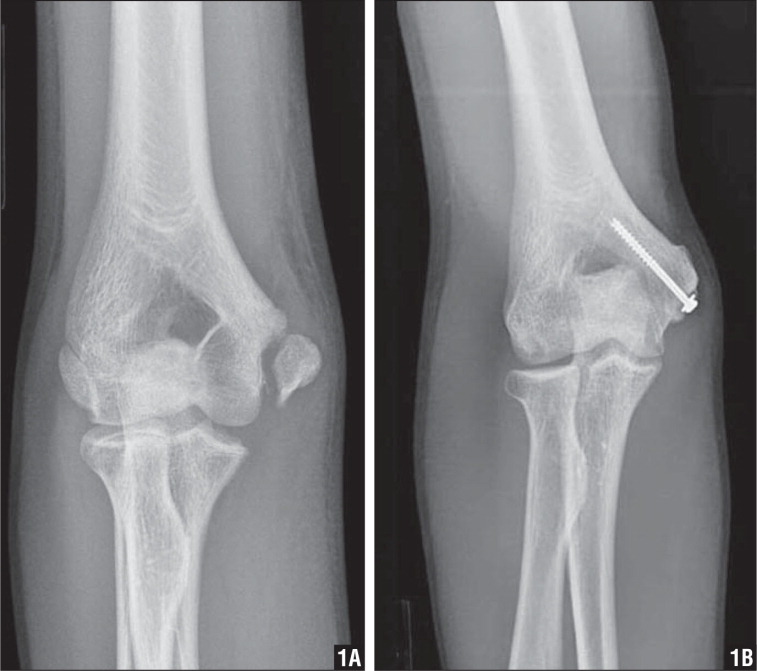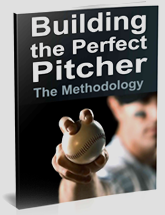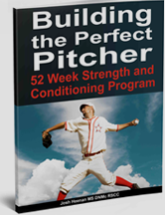Should My Son Play Fall Baseball?
Early specialization — the practice of playing a single sport for most of the year and foregoing the opportunity to play other sports — is an increasingly popular strategy in the United States. In my experience, this is especially true for baseball, gymnastics, hockey, and soccer. For parents of baseball players, the first question on the road to early specialization is often, “should my son play fall ball?” I offer the following thoughts to help answer this difficult question.
Little League Baseball

Before focusing on Little League baseball in particular, it is helpful to revisit the goals of youth sports in general according to Hedstrom and Gould:1
- Learning and developing physical skills
- Appreciating the value of fitness
- Building a sense of belonging among one’s peers
- Acquiring sport skill for leisure
- Stimulating physical and emotional growth
- Cultivating a sense of self-worth
- Developing social competence
- Building morals and personal integrity
- Learning to cope with failure**** Added by Josh
Little Leaguers experience morphing of the humeral joint (the bone that runs from the shoulder to elbow) as a result of the throwing motion. This adaptation becomes more significant as a player matures physically and begins to throw harder and more often. These changes in the arm lead to more external rotation of the shoulder, which in turn allows a player to throw harder as he gets older.2
A follow-up study questioned pitchers ten years after pitching in Little League. The researchers questioned the former Little Leaguers about injury, which was defined as elbow surgery, shoulder surgery, or retirement due to throwing injury. Pitchers who pitched 100 innings or more were 350% more likely to be “injured” than their counterparts who threw fewer innings in a years time. I would submit that all of these “injuries” were traumatic, as they either ended or directly affected the careers of the players in question.3
For simplicity’s sake, I will exclude the throwing variables caused by playing catcher, playing on multiple teams, throwing with friends, and participating in practices, scrimmages, and warm-ups from the following example. This example also assumes that a pitcher will throw six innings every three games, as this is the “normal” workload for a Little League pitcher.
Westport Little League:
- Spring Regular Season: 20 games or 40 innings pitched
- Summer District Play: 13 games or 26 innings pitched
- Summer Regional Play: 4 games or 8 innings pitched
- Little League World Series: 6 games or 12 innings pitched
- Total: 43 games or 86 innings pitched
Fall Baseball: 8 games or 24 innings (assuming a pitcher will throw 3 inn. a week)
Total: 51 games or 110 innings
To me, these numbers make clear that a Little Leaguer who pitches approximately six innings per week, plays competitively all summer and continues to play fall baseball will reach that 100 inning number and have a markedly higher risk for serious injury or ending their career.
High School
A study by Dr. James Andrews and his staff surveyed two groups of pitchers with an average age of 18. One group had no history of elbow or shoulder pain lasting longer than two weeks; the second group consisted of pitchers who had either shoulder or elbow surgery due to overuse from pitching. The pain-free pitchers averaged 5 ½ months of competitive baseball per year, while the group that required surgery averaged eight. The results of the study reveal that pitchers who pitch competitively eight months per year are 500% more likely to require shoulder or elbow surgery.
High school baseball pitchers in the northeast may have a slight advantage over their southern counterparts, as the seasons in the northeast are shorter (assuming the pitcher does not have access to a dome in the winter). Northeast baseball is normally played competitively for seven months — from April to August with fall ball in September and October — while southern baseball has virtually no offseason. Thus, the abbreviated season in the northeast protects pitchers from overexertion, while the clement weather in the south, though seemingly a blessing, exposes pitchers to a greater risk of injury.
But I need to play more baseball to get better!
Before worrying about a child’s improvement in a given sport, the child’s health and well-being must be considered. Especially in youth sports, parents and coaches have an obligation to monitor their athletes’ physical and mental health. Indeed, experts have observed that “early specialization is associated with a range of negative consequences affecting physical, psychological, and social development.”4 In addition to keeping athletes healthy, the goal of youth athletics should be to allow each player to fulfill his potential and play as long as he desires.
Even so, it is absolutely true that practice is necessary to progress and become elite in a sport. Scott Kaufman speaks on this subject in his book The Complexity of Greatness: Beyond Talent Or Practice.5
Kaufman also notes that children who play multiple sports are better “learners” because they can utilize their prefrontal cortex more efficiently than single sport youths. Experience in a variety of sports gives an athlete a larger “pool” of skills to draw on when attempting a new sport. One of my favorite examples of this is a former athlete of mine, Dave Boisture. Dave was an all-state quarterback who also played baseball and basketball in high school and eventually played outfield in college. Dave’s “pool” of athleticism was large because he was a stellar multi-sport athlete who learned to run, throw, jump, dodge opponents, adapt to field conditions, and play well under pressure. The following video shows Dave making an incredibly athletic catch while running up an inclined outfield in the high-stakes environment of an NCAA Regional Tournament game.
Dave’s holistic approach to baseball and sports in general was clear during our initial fall testing last year. During testing, each player receives a sheet to fill out which includes position. Dave wrote “athlete” instead of “outfield,” the expected response. Dave’s understanding of himself as an athlete, rather than merely a baseball player, allows him to employ the full array of athletic skills that he has learned over the years. This versatility in turn makes Dave indispensable to his team.
Final Thoughts
Besides the fact that the research shows a direct correlation with extra months of competitive baseball and a significantly higher surgery/drop out rate, I am not a fan of fall baseball in its current format. Normal seasons have players practicing and playing 4-6 times per week, while fall ball often has zero or one practice per week with two to four games on the weekend. Most kids don’t throw or prepare themselves for the games during the week, and take the mound as they would during their summer seasons. In my opinion, this lack of consistent practice and preparation during the fall season is dangerous regardless of the number of innings the pitcher has thrown in the spring and summer months.
I also object to the exploitative nature of many fall leagues. Before I receive all sorts of hate mail, please understand that I am speaking in generalizations and that I appreciate that many programs “get it.” However, I know for a fact that many leagues feel that fall ball is necessary to raise more revenue and make ends meet. I also know that many programs exploit this opportunity to tell players and parents that a kid must play fall ball to keep up with their peers and be considered for an organization’s spring or summer programs. Such programs do a disservice to their players not only ethically but also athletically, as this approach limits players’ athletic growth and increases their risk of career-ending injury.
The research presented in this post deals primarily with pitchers, but I recommend limiting all baseball players to competitive spring and summer seasons only. Playing other sports and practicing baseball skills on the side will allow an athlete to progress as much as early specialization, but it involves a much smaller risk of overuse.
Anecdotally, there is no question to what the correct answer is. Every professional baseball player I have ever worked with was a multi-sport stud in high school. In the rehab setting, I have seen an increasing number of injuries that correlate well to the research and are directly linked to fall baseball.
Related Articles
http://www.kevinneeld.com/2011/hockey-development-resistance
http://www.ericcressey.com/your-arm-hurts-thank-your-coaches
Citations
1. Hedstrom R, Gould D. Research in youth sports: Critical issues status. White Pap Summ Exist Lit. 2004. Available at: http://hollistonsoccer.net/image/web/coaches/CriticalIssuesYouthSports%20(2).pdf. Accessed October 9, 2013.
2. Mair SD, Uhl TL, Robbe RG, Brindle KA. Physeal changes and range-of-motion differences in the dominant shoulders of skeletally immature baseball players. J Shoulder Elbow Surg. 2004;13(5):487–491. doi:10.1016/j.jse.2004.02.008.
3. Fleisig GS, Andrews JR, Cutter GR, et al. Risk of Serious Injury for Young Baseball Pitchers A 10-Year Prospective Study. Am J Sports Med. 2011;39(2):253–257. doi:10.1177/0363546510384224.
4. Baker J, Cobley S, Fraser‐Thomas J. What do we know about early sport specialization? Not much! High Abil Stud. 2009;20(1):77–89. doi:10.1080/13598130902860507.
5. Ford PR, Hodges NJ, Williams AM. CREATING CHAMPIONS THE DEVELOPMENT OF EXPERTISE IN SPORT. Complex Gt Talent Pr. 2013:391.













Rich Estes 1:17 pm on October 19, 2013
Josh,
Spot on! My son now 18 yrs. old has been playing baseball since he was 7 years old. Started in Little League. At the age of 13 – 15 played travel ball. At the age 15-18 high school. I have always promoted mulit-sports for my son. He played football 3 yrs of high school football. As a young boy he played any sport that had a ball associated with it. He even got in to some completive moto-cross racing for a period of time. I never wanted my son to be a pitcher for the reason you stated. I always taught and trained my son to be a athlete on and off the field. As you know, athletes are typically the top players on the team, which lead to these players pitching on their respective youth and even high school teams. This is unfortunate for these players because the coaches tend to over use their arms to win. I’m all about winning, why play the game if your not there to win. But I have refocused my attitude about winning. “Winning isn’t everything but PREPARING to win is” . It’s preparation that leads to winning and more importantly reduces injury. My son is now a prospect to go on to play at the collegiate level. The only arm injury he really suffer was when he was 12 yrs. old when he was playing Little League All Stars. That when he was pitching a playing SS. Fortunately, he recovered quickly with band therapy. He also suffered a Obturator Internus by over training on his swing. He was taking about 200 plus quality swings a day. This totaled 3700 plus swings in 18 days with only weekends off and those weekend he was playing games. I quickly cut back his hitting workout to 3 days a week and only 150 swings.
I would like to read or hear your thoughts on a good off season and on season training program for baseball athletes.
Thanks
Josh Heenan 1:31 pm on October 19, 2013
Rich,
Thanks for the kind words. Love the approach you offered your son. Many good things to come on the site. Feel free to shoot me an email on the content you wish to see. I have much in the works, but I’m sure there are topics you’d like discussed.
How to Properly Condition a Pitcher | JoshHeenan.com 8:59 am on November 18, 2013
[…] ← Should My Son Play Fall Baseball? […]
Chris Seelbach 10:33 am on November 19, 2013
Josh,
A friend of mine sent me a link to your website and I think you are spot on with the few articles that I have read so far. I am a former Major League pitcher and also pitched in Japan as well. The one thing that is also troubling in regards to this article about fall baseball is how much baseball the “elite” players are playing at a young age (10-12). Elite travel baseball has kids playing 100-150 games a year and pitching 7-8 innings on a given weekend. These 7-8 innnings are also being pitched in multiple games throughout the weekend. Keep up the good work.
Josh Heenan 6:53 pm on November 19, 2013
Chris,
Thanks for the kind words, I’m glad the info is spreading to the necessary people!
“Elite” at an age of under 14 is very tough to quantify and may cause more damage than progress. Would love to get more of your opinion about the research and how we can progress the sport as a whole. I have been asked to assist many youth baseball programs to help organize their programs to protect the kids, yet still play at a high level.
Feel free to shoot me an email joshua.heenan@gmail.com
Best,
Move Fast, Throw Hard, Live Well- Little League Curveballs | 9:53 pm on February 23, 2014
[…] From what I have seen in the rehab and coaching world, poor progression of throwing (jumping up in intensity or mainly volume) too quickly leads to lots of issues. The kids who throw “too many curveballs” are usually the kids who cant compete with just a fastball. And as I have written about before, skipping on fall/winter baseball is a must. […]
Hello world! | Josh Heenan 11:14 pm on March 25, 2014
[…] From what I have seen in the rehab and coaching world, poor progression of throwing (jumping up in intensity or mainly volume) too quickly leads to lots of issues. The kids who throw “too many curveballs” are usually the kids who cant compete with just a fastball. And as I have written about before, skipping on fall/winter baseball is a must. […]
Josh Heenan | Why Your Conditioning is Hurting Your Performance on the Mound! 12:15 pm on August 30, 2014
[…] now, readers of this blog are familiar with the concept of the “well rounded athlete”—the athlete who focuses on the fundamentals of movement and conditioning in order to master […]
Coug Rogers 11:58 am on September 27, 2014
FALL BALL! Only you can decide that… do you play summer travel ball ? How many games total are you playing a year ? Getting Extra work is never a bad thing.. but you have to rest the mental side of the player also… If your playing in a competitive league Travel ball in the Summer… the last thing you want is to Burn the kid out… and Believe me this can happen… I’ve seen it.. Communication with your kid is very important… Many things you can do to keep your mental skills sharp while resting your body.
Josh Heenan 1:33 pm on September 27, 2014
Coug,
In regards to “Getting Extra work is never a bad thing” I disagree with because the research states otherwise and anecdotal evidence in my clinic absolutely says more is not better.. Putting the injury research I laid out in the article (which I believe the be the most important aspect here) on the back burner, deliberate practice of a skill is the key to making progress. Ericsson’s research presents nicely that deliberate practice is the key to becoming elite. http://www.mockingbirdeducation.net/uploads/5/4/0/7/5407628/ericsson_1993.pdf
If you wish to get better at math and I just gave you math tests each day without practicing those skills, you would limit your ability to reach higher levels of math comprehension thus capping your potential. Playing extra games is not the way we develop elite skills, practice is. Look at any elite level organization- NFL, MLB, NHL, Olympic- they all spend exponentially more time with deliberate practice than competition.